Into Africa Part 2 – twelve days on two wheels

Big Blue is my new best friend. He’s 2019 GS1250 HP. He’s a bit taller, heavier and faster than Now Voyager II., but he has a way better dashboard. After the first day of getting to know each other, we became fast friends.
Karen and I had opposite views of our Africa trip. She could endure the motorcycle part in order to go on the animal safaris. I could endure the animals in order to get to the motorcycle part. This post is all about my turn. Getting on the m/c was our first chance to see a bit of Africa, aside from the to/from the game lodges of the first or last legs. Even though we were most often whizzing past the sights, we did get a feel for SA. More on that in a bit.
Here’s the tour basics: 12 days through three countries on a GS 1250 with two other bikes, a tour leader, and a chase vehicle. Our first day was June 3rd and our last day was June 15th. Here’s the map from our tour company, SAMA used.
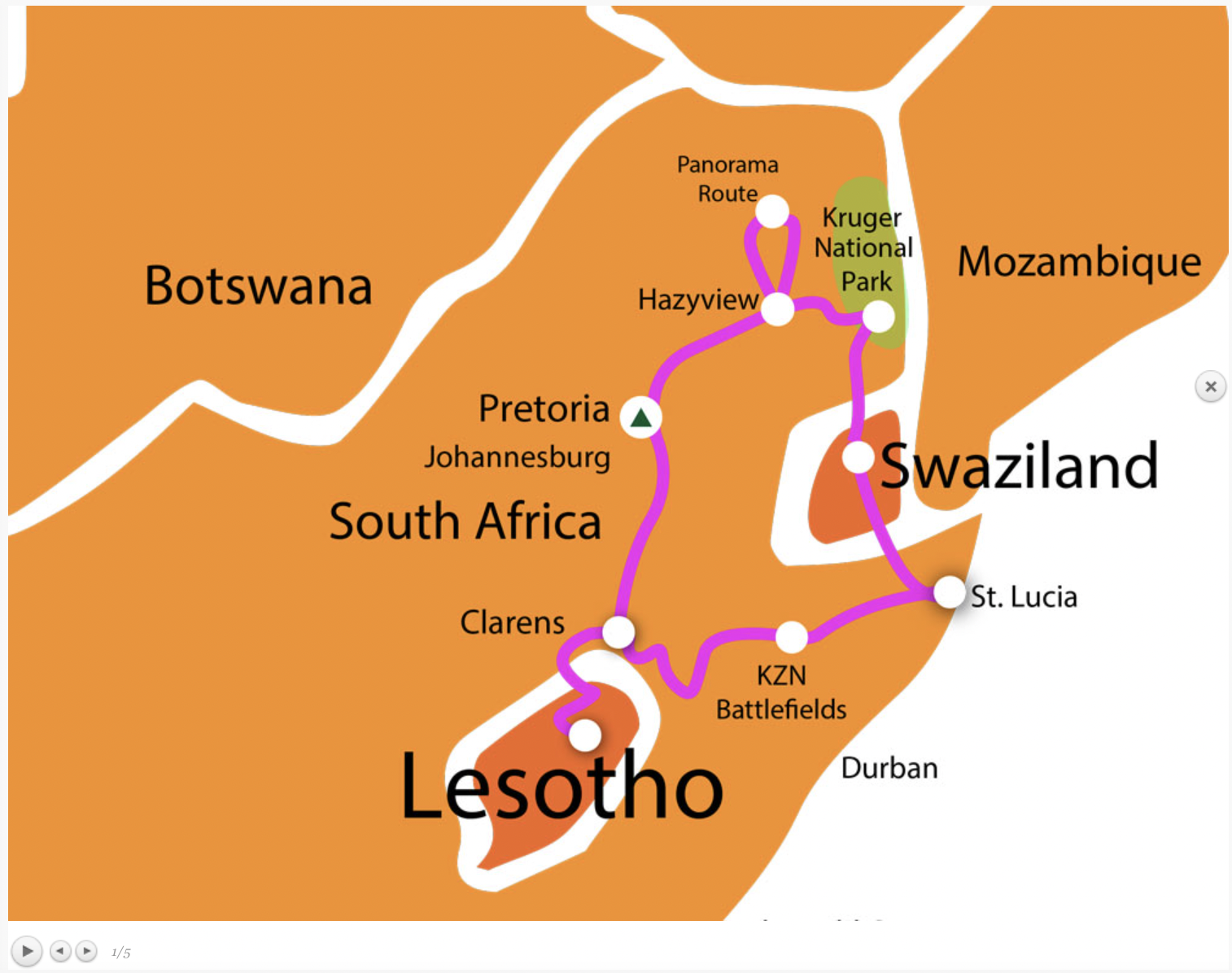
The Tour started in Pretoria and made a clockwise circle, starting northeast to Kruger National Park, then south through Swaziland, to St. Lucia and the Indian Ocean and then further southeast to Lesotho. We turned almost directly north and finished the loop at Pretoria.
The Pros and Cons of a Tour
We debated long and hard whether to take a tour or not. As you would expect, we’re not real good at going along with a group on almost anything, let alone motorcycling. After experiencing our first tour, here’s the pros and cons (most of these would be true for any tour, not just motorcycling).
The Pros
- They take care of EVERYTHING from bikes to routes to accommodations. It’s pretty nice having someone do all the stuff that we normally do.
- No shipping of m/c required. My GS1250 was a 2019 HP model that was in excellent condition and hauled butt. We showed up, adjusted a few things, and off we went.
- We saw things and stayed at places that only someone experienced in the area would know about. This was especially true of hotels in the middle of nowhere.
- Having a chase vehicle is a big deal. Unfortunately, KR rode in it most of the time because she contracted a virus, which is one of the reasons I wanted a chase vehicle. It was a great luxury to not have to cram things into two small bags and to have the chase vehicle carry all of your stuff (including loading and unloading). Our vehicle had room for 8 passengers, a spare m/c and all of our stuff.
- All of the above eliminates most of the drama of a trip. By drama, I mean breakdowns, getting lost, worrying about whether we were going to find a place to sleep that night — all the things that a non tour rider faces.
- You meet and travel with other people. We spent 12 days with Darrell (the tour leader), Clayton (chase driver), Allan (retired Brit) and Duncan (Florida construction mgmt.). Fortunately, we all got along well and had some interesting conversations. And, most importantly, we were all talking to each other on the 12th.
The Cons
- Well, it’s not really an adventure anymore, with all the fear and excitement that discovery that entails.
- There’s very little flexibility as to timing, route, start/finish times, where to eat & drink, etc.
- Riding in a group with other riders is mostly a bore. Our group was saved as the Tour Leader, Darrell (who is also the owner of SAMA) was a very good rider and upped the pace often enough to make it interesting. Darrell and I set a faster pace and Allan/Duncan set a slower one.
- The people. If you’re not lucky to have people you like or at least can live with, then it could be a long trip.
- Price. It’s obviously more expensive to pay someone to do all the work. SAMA is an excellent tour company and they were thousands of dollars less than the big name global companies.
The Do Overs
- We would definitely read the details of the tour more carefully, paying special attention to accommodations. Once again, we were lucky as we had only two semi-duds in 12 nights. This is a habitual problem of ours as we very rarely pay close attention to anything regarding a trip much before we go on it.
- Paying close(er) attention to weather is a must. We basically got colds and didn’t feel well most of the trip because it was really cold — on or off the bike. It would have been much better if we’d brought along the right clothes (no bathing suits, shorts, flip flops or t-shirts as suggested).
- 12 days was the right amount of time for us this trip, but now I wish we’d signed up for one a bit longer as I was just getting into the swing of things and it was over:)
We’re glad we went this direction. We can’t say enough good things about the SAMA team: Nicole, Darrell and Clayton. They took care of us and everything we needed including going way out of their way to find Karen a doctor and getting me tons of cold meds. If you’re going to SA, give them a call.
South Africa Impressions
Like so many countries we visit for a short time, we only come away with impressions rather than a deeper understanding and appreciation. Same goes for South Africa (and Swaziland and Lesotho) we’ve driven hundreds and hundreds of miles down its roads, seen or rode through dozens of small towns and villages, seen thousands and thousands of South Africans on its roads waiting for taxis, growing corn, eating sugar cane, washing the laundry, and seeing their children playing. Yet, we only have a very shallow understanding of the country and its people. Bottom line, we like the country and wish we could see more of it (especially Cape Town). Here’s some impressions
- Much of the countryside looked like countryside anywhere. It’s only when you get to the bush and tall grass of the game reserves do you get a sense of Africa. We saw gorgeous pine-covered green mountains that could be in the American West. And rocks, canyons, and cliffs that made us wonder if we were in Arizona or Utah. To me, the real Africa were the grasslands in the southeastern part of SA and Lesotho. Dotted with round huts with straw roofs and the assorted stuff of homes, it was breathtaking in its expanse and beauty. The game reserves were in the brush, which is brush, except there might be a lion or elephant behind any bush!
- Everyone we met was incredibly nice to us and had the brightest smiles. Of course most were service folks, but they all made us feel comfortable. In a country that is 80% black, we never felt uncomfortable as the minority population(we didn’t even notice it). We felt the warmth of South African people. We met a lot of South Africans in the lodges and hotels we stayed in and once again, they were always smiling and offering help.
- Like most other countries the top live very very well. Huge houses out in what I would call the bush, lots of land and very high fences (are they to keep the animals away or their neighbors?). All of the businesses we patronized were owned/managed by white people. Of the thousands and thousands of people we saw along the roads, at bus or taxi stops, and in small towns or farms, they were 100% black. This is going to sound terrible– that no matter where one goes, poor people are poor people — they may look different, live in a different kind of squalor, survive doing different kinds of work. In SA, they live in tin shacks or small huts. In India, they live in shacks down narrow, filthy streets. In Mexico, they live adobe huts. And in America, they live on the streets. My heart goes out to all these people while at the same time thinking that I could be one of them except I was born in America, my parents had jobs and provided us with a good upbringing. The more we travel, the more we realize that the majority of the world lives in much much worse conditions than we.
- Crime is a problem in SA. Our guides told us of car jackings and other violent crimes happening every day. While I always felt safe, we were in our guided little cocoon. We saw absolutely no violence or robbery on this trip. Yet, while Karen was in a local clinic, a white woman was ushered in by her husband. She had just barely escaped a car jacking/kidnapping that left her with a broken nose and a slashed throat. She barely made it away. Most of the middle to upper middle class residential neighborhoods are fenced and gated with security.
- Once we got off the main roads, especially in the mountains, we started to see the Africa of picture books. Small round huts made of brick, grouped together in a family unit or village, with children playing in the yard and women doing the laundry. Crops were carried to market via an ox-pulled two-wheel wagon. Crops seemed to be sugar cane, corn, bananas and wheat. Most houses looked like they had electricity running to them with many having TV antennas sticking out from the roof or window. Yet, just like Morocco or Ethiopia, there seemed to be one well in each village that was visited each day.
- Aside from the occasional horse or donkey, the main transportation for regular Africans were either mini-vans serving as buses and small cars serving as taxis. There were a fair amount of cars on the major highways, always hauling butt and impatient to get around. Drivers in SA are somewhere between Mexicans and Indians. They drive really fast, use only signals occasionally, but don’t seem to have the kamikaze attitude of Indians.
- Of course the most lasting impression will be of the animals. We saw dozens of them, from the exotic (leopards, cheetahs
- elephants) to the mundane (Impalas and Blue Wildebeest, but pictures just can’t convey the size of a rhino or elephant, the beauty of a zebra, the gracefulness of a giraffe or the shoulder muscles of a cheetah. If any of you readers are thinking about going, you must go if only for the animals.
- Country roads and highways were sometimes a problem for bikers. None- OK a few kilometers- were dirt or gravel or any way non-drivable. But surfaces were uneven and there were tank-sized potholes. We used a buddy system to spot and mark potholes for the riders following. It worked as no one disappeared down a hole.
The Ride
I’ve already written about how rejuvenated I felt on this ride (see “Is there a use-by date for motorcyclists). It was exactly what I needed as there is no way not to have a great time on a m/c. Darrel and I kept a brisk enough pace to make it interesting. Any experience level would be good to go on this trip, but expect a couple of kilometers of dirt and gravel every once in a while. My GS 1250 was exactly the right bike for this kind of trip, excepting its still too tall for yours truly, Speeds ranged from 30 to (very occasionally) 200KPH with most settling in at 60ish. Gas stations were a plenty with plenty of roadside restaurants to check out. The “Panoramic Ride” near Hazyville (right on the border of Kruger in the east) and the mountain road in Lesotho were the most memorable. Twisty with great scenery.
Here’s what the ride looked like in pictures.
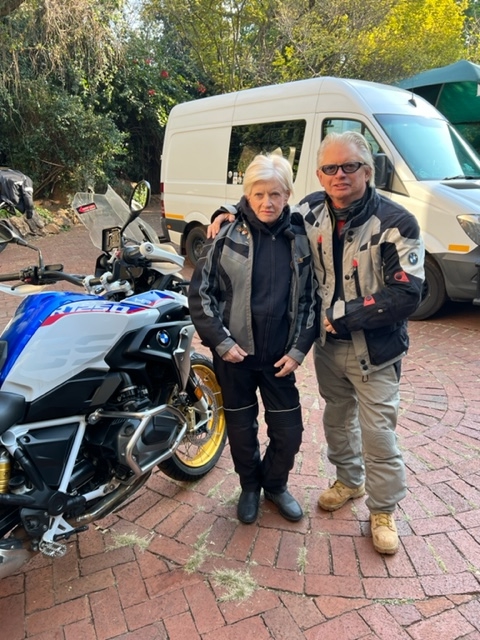
The Beginning. This would be the only day KR rode the bike.

Lunch stop along the way served African dancers with food. I grew to like African music alot.

Dinners were always a time for recapping the day or delving into important world issues (not). Duncan in foreground with Darrell and Clayton in background. This was one of the first game reserves we stayed in
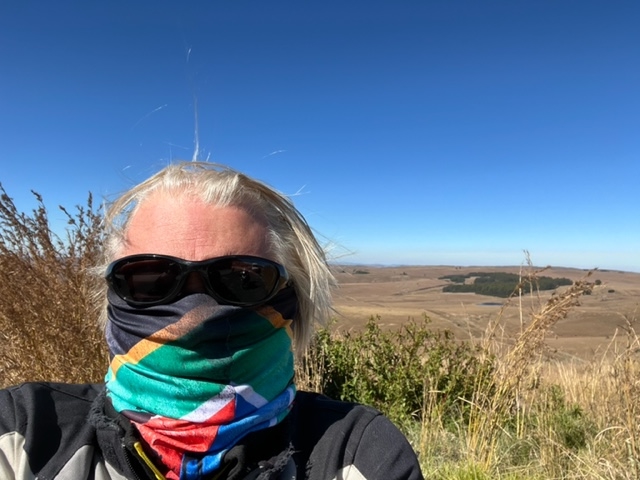
For most of this trip, its been very very cold. This is on Day 2, in the mountains. Karen wisely stayed…
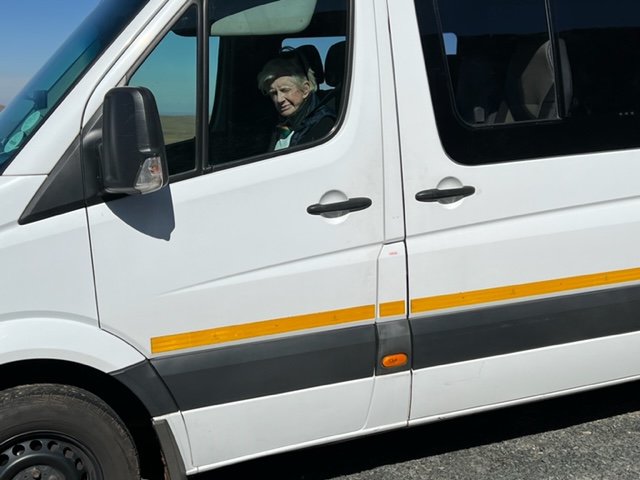
in the chase vehicle. The chase vehicle would serve many purposes: Karen’s limo, luggage transport, transport to dinners, tool chest, spare bike carrier and medical transport to a local clinic.

Allan on the left and Duncan on the right. We visited a lot of battle sites in this trip. Most of the battles were between colonialists and locals. Guess who won and built all the monuments?
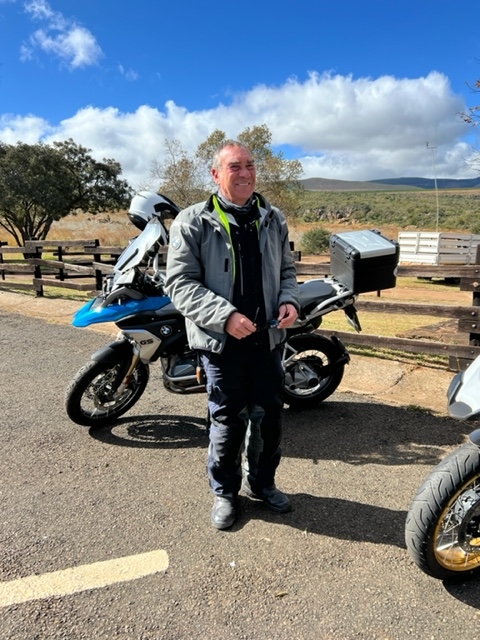
The Man. Darrell set the pace that was perfect for yours truly. It was fast enough to make me work (75-120mph), yet pretty safe as Darrell knew all the road sand signaled the potholes ahead. I came away from this ride feeling pretty damn good about riding a motorcycle.

Allan and Duncan at a site seeing vista called the Pothole. Allan is a retired nurse from Liverpool (that’s where he was born, never could get the name of the town where he lived). Duncan is a recent transplant from Chicago to Tampa. Both were terrific riding mates for very different reasons. Made for some interesting dinner conversations. I think we got lucky with this crew.

One of our days was spent on a 300km loop in the mountains next to Kruger National Park. I call this the Green Grand Canyon.

More Green Grand Canyon
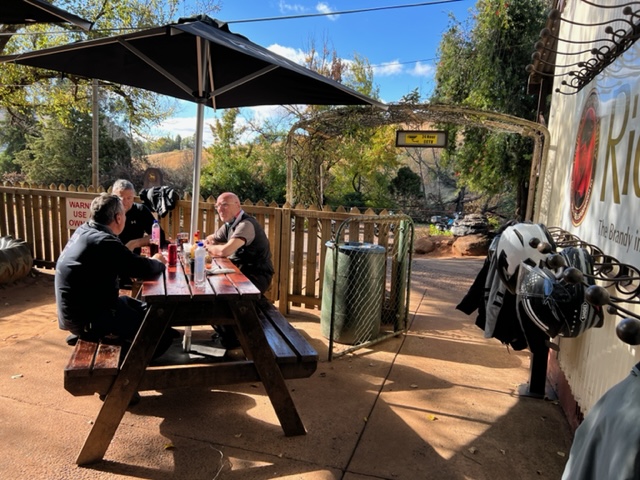
Lunch stops were always needed and welcomed. This is a little mountain village called Pilgrims Rest.

Useful windshield reminder.
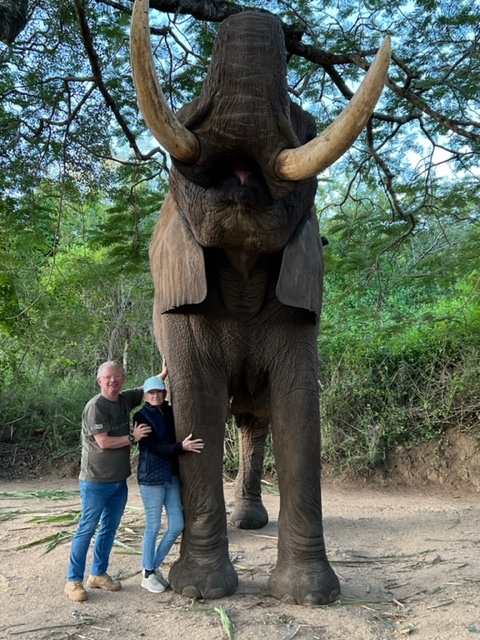
We took part in an “Elephant Interaction” and it lived up to its name! No picture will do a giant like this justice. Just touching his “skin’ or feeding him was an other worldly experience.

We stayed two nights in a beach town called St. Lucia. St. Lucia is famous for its hippos. Lots and lots of hippos that walk the streets at night. Despite going on a couple of late night hippo sighting runs, we only saw them in the river. Earlier the same day a woman was killed by a hippo near the water’s edge. Seems like it was a regular occurrence.

Big Blue’s only problem was one morning he wouldn’t start. It was an electrical problem that was “solved” by jump staring him via another bike. Man, its nice to have a crew along who can fix it when it breaks:))
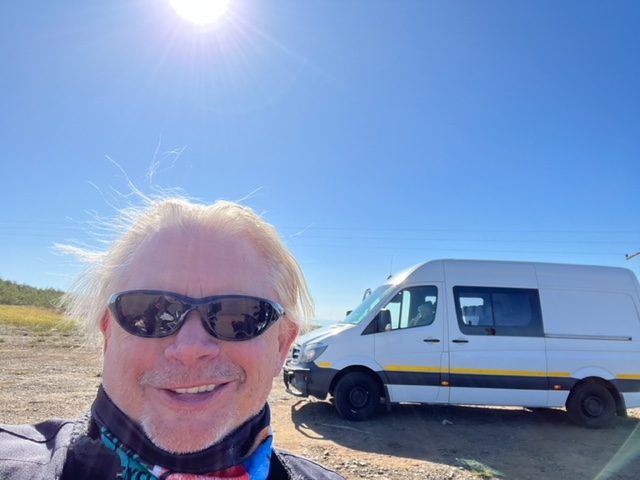
One of dozens of happy camper motorcyclist pictures

Stopping at a famous British/Zulu battle museum. This time the Brit’s lost.
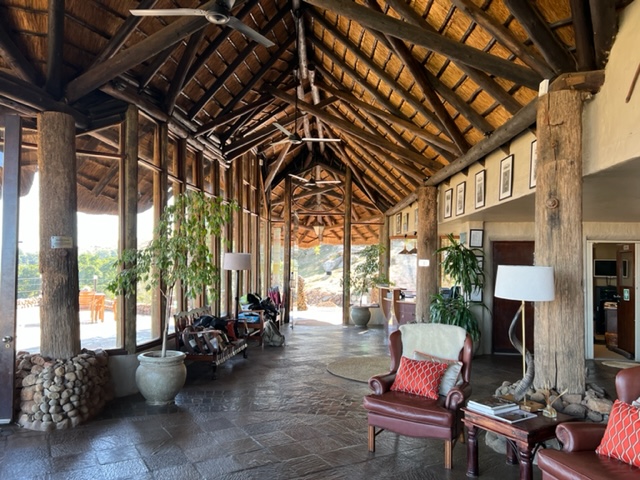
If you write down one name, let it be this: Isandlwana Inn. This is one of the most unique, best mini hotels/lodges that we’ve ever seen. No words or pictures will do it justice. Go there.

Looking out over the Isandlwana Battle scene.

Great conversations occurred around the bar. Allan is making an important point that Clayton doesn’t appear to get.

Dogs are dogs, no matter the size. These two giants liked their couches and chairs no matter the size

Team pic at what looks like the Arizona or Utah mountains. It’s called the Golden Gate.

Unfortunately, this is the closest KR got to the bike for most of the trip. She was a trooper though.

We spent a day riding through the mini country of Lesotho. Much or the countryside was small villages/houses that looked like we were in the 1800s.

We rode up and down a 4000 meter mountain . And no, we didn’t pay any attention to the sign
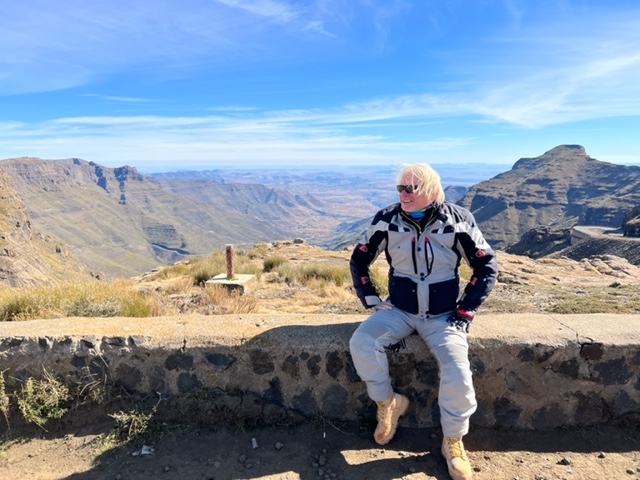
Adventure man shot. Top of the mountain and top of the spirits. Hair and makeup didn’t show up for this shot: )
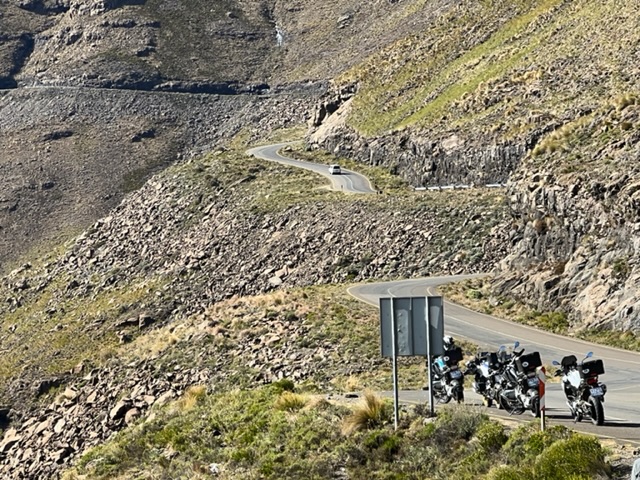
Now THIS is a motorcycle road

Women and children carrying wood and food on their heads.
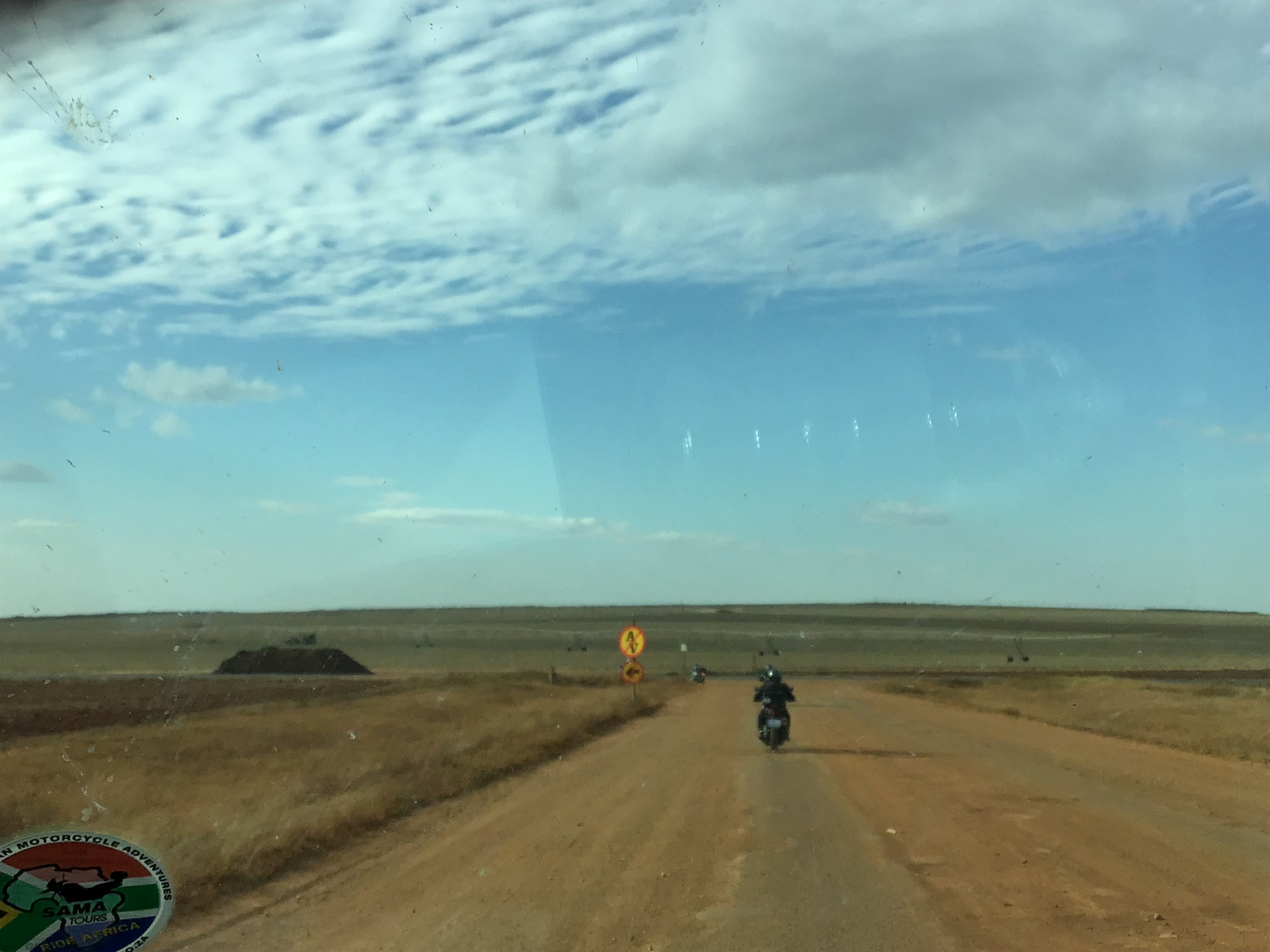
While 90% of the roads were paved, there were occasional dirt and gravel stretches

The after shot. Everyone was happy getting through it all

I’m proud to say that Big Blue made it through without a new scratch — a first!

Last supper and we’re all still talking to each other. From left, Clayton (the all time best Chase Vehicle Driver and all around good guy), Allan (Brits U have a sense of humor), Nicole (the best “adventure” logistics planner ever), Darrell (the Man) Duncan (grew in stature and m/c riding abilities during the trip) and Karen (one tough cookie)
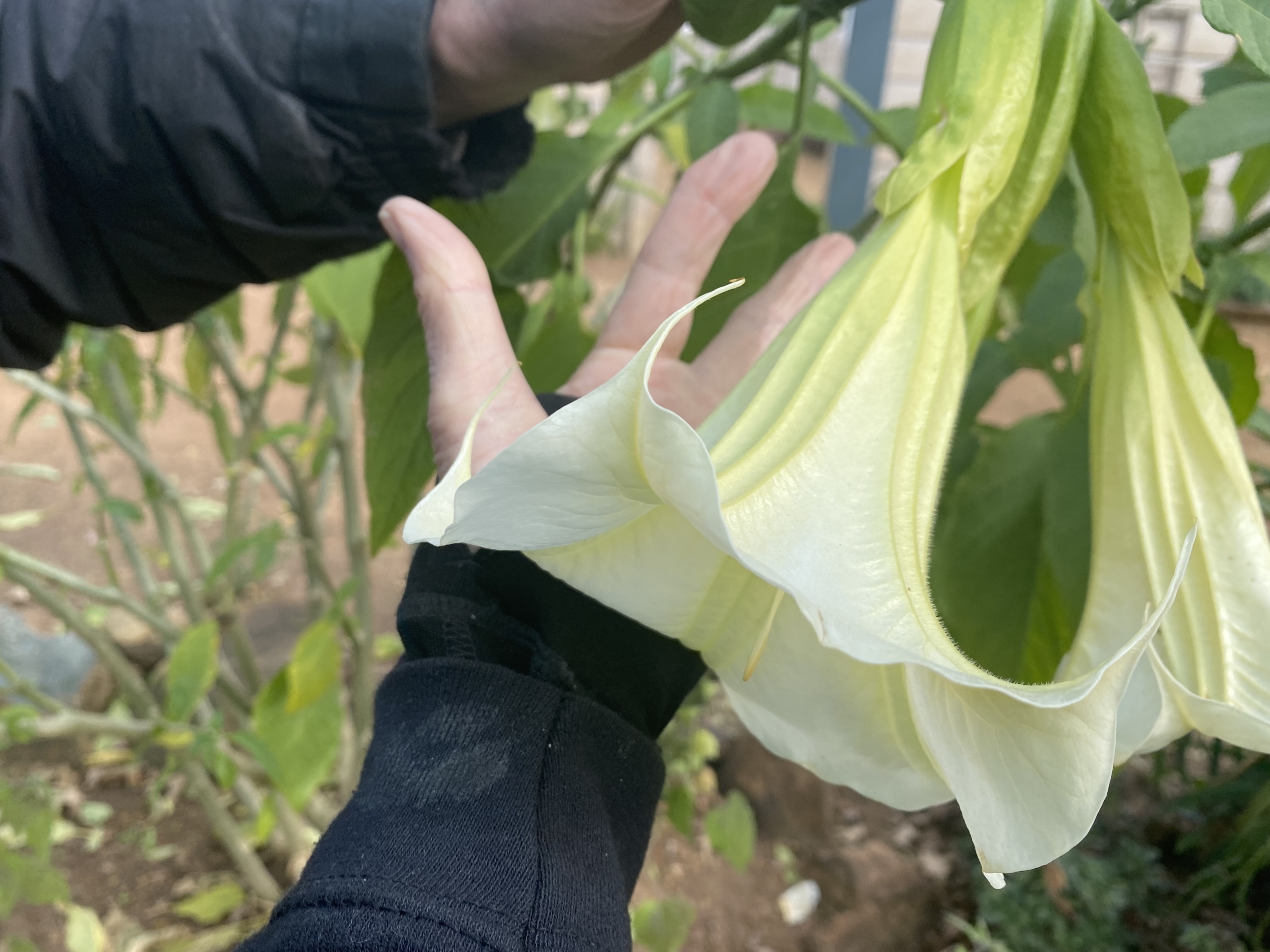
What trip would be complete without Karen finding a plant she wanted to take home. We’re bringing a lot more than just flowers home.

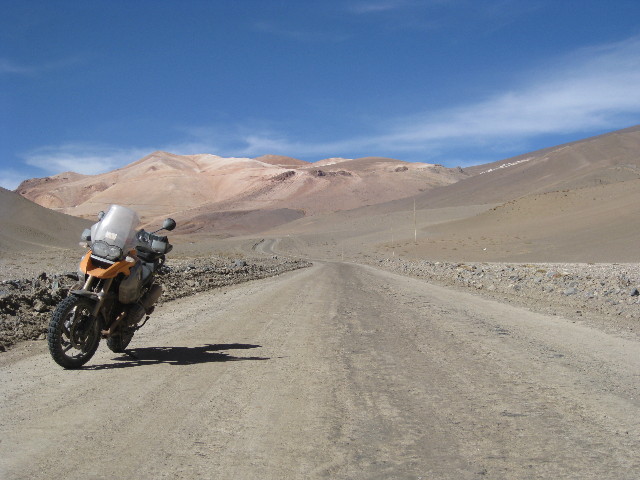
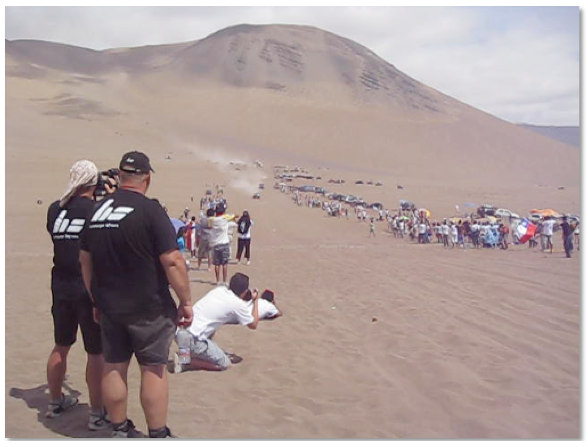
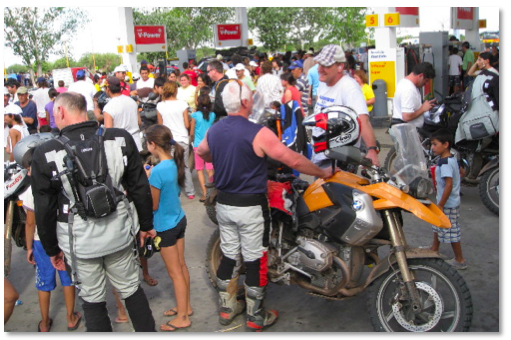
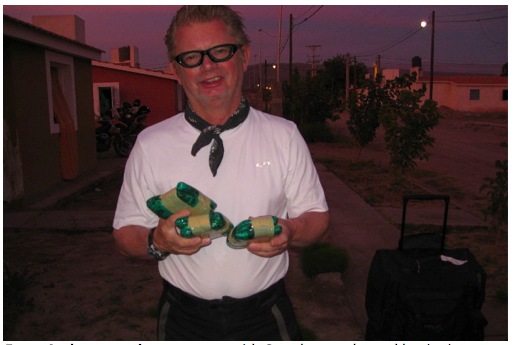
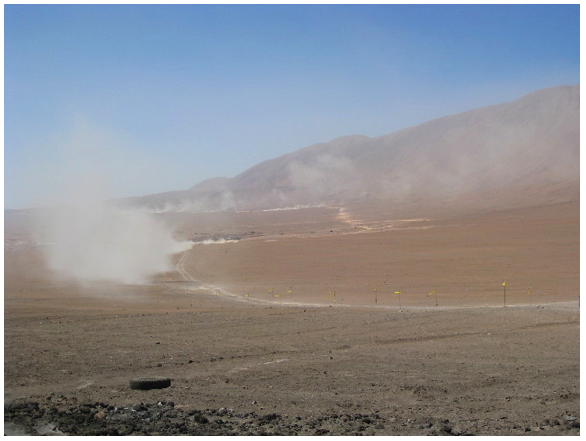
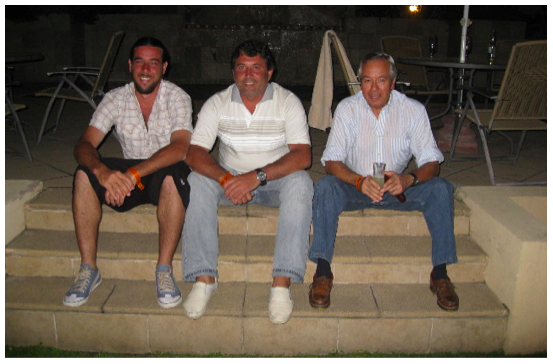


Great blog Fred and an accurate view of our trip. Worth reading about the Anglo Zulu and Anglo Boer wars as an example of how not to do things
Thanks for sharing the story and pics, as always. Sounds like you had a great time. Playing with an elephant sounds like a bad idea. Were you able to find your ‘cold’ Corona?